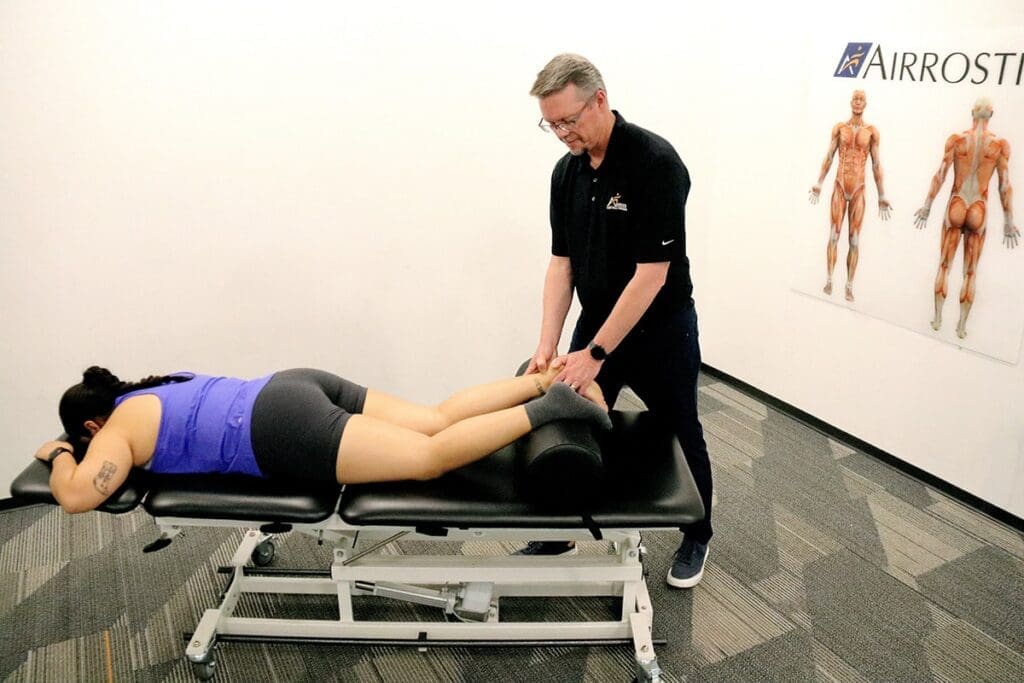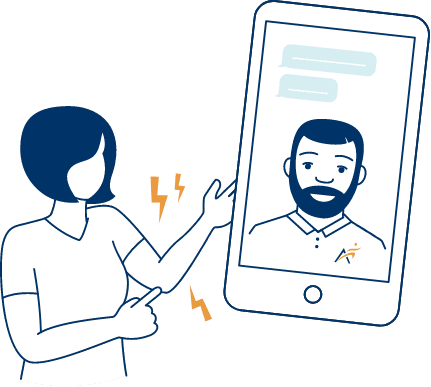- About
Who We Are
Partner With Airrosti
Testimonials
- Locations
Nationwide Care
Our virtual care option, Airrosti Remote Recovery is available nationwide.
Find A Location Nearest You
- Injuries We Treat
- No Cost Assessments
- Virtual Care
- Careers
Our virtual care option, Airrosti Remote Recovery is available nationwide.
(21,000+ reviews on Google across 150+ locations)

Have questions or would like to schedule over the phone? Call us at 844-719-5079
Find an Airrosti Clinic Near You (OH, TX, VA, WA)
We take the time needed for a thorough examination to find the underlying cause of your pain.
Airrosti Providers use hands-on manual therapy to treat Achilles tendonitis symptoms to reduce pain, increase mobility, and accelerate healing.
No surgery, injections, or prescription medication.
Patients have shorter recovery time with an average of 3.2 visits over 2 weeks.
Speed your recovery and keep your pain from returning.

She also discusses Airrosti’s approach to Achilles tendonitis and how we allow our patients to stay active during treatment.
Still have questions or concerns about your Achilles tendonitis? Schedule a no-cost video chat with one of our Providers.
The Achilles tendon is the largest tendon in the body. It is a band of tissue that connects your calf muscles to your heel bone and is used when you walk, run, and jump. It is also prone to tendonitis when overused.
Achilles tendonitis is an injury that occurs when the Achilles tendon becomes inflamed and irritated after extensive use. This inflammation inhibits the tendon’s ability to move and can cause sharp, intense pain near the back of the lower leg. Achilles tendonitis is commonly known as Achilles tendonosis or Achilles tendonopathy.
There are two different types of Achilles tendonitis, insertional and non-insertional:
Insertional Achilles tendonitis occurs when the pain is located at the tendon’s insertion point where it attaches to the heel bone. Inflammation occurs in this area and causes this unpleasant pain.
With insertional Achilles tendonitis, pain is often worst first thing in the morning or a day after activity.
In this case, pain is in the middle of the tendon. Inflammation occurs in the middle of the tendon and causes swelling and pain. This is common in active, younger people. Pain is often worse before or shortly after activity.
Achilles tendonitis typically develops when we push our bodies to do too much, too quickly. Achilles tendonitis most commonly occurs in runners and other athletes who have suddenly increased the intensity or duration of their training.
Below are a few of the risk factors associated with Achilles tendonitis:
• Tight calf muscles
• A bone spur that has developed on the heel
• Running in improper footwear, on steep inclines, or in cold weather
• Flat arches on your feet can put more strain on the tendon when running
• Medical conditions like obesity and high blood pressure

Achilles tendon pain typically begins as mild heel pain. Sometimes pain and swelling are present in the back of the leg or above the heel. Any action that requires flexing the calf muscle may be painful.
More intense pain may occur after prolonged running, stair climbing, or sprinting. You might also experience tenderness and stiffness, especially in the morning. These symptoms usually improve throughout the day as your body warms up.
Surgery is not usually necessary for Achilles tendonitis. Most cases can be effectively managed with conservative treatments such as rest, physical therapy, Airrosti care, medication, and lifestyle modifications. Surgery may be considered if conservative treatments fail to provide relief, or if there is a significant tear or rupture of the Achilles tendon that requires surgical repair. It’s important to discuss all treatment options with a healthcare professional to determine the best course of action.
It’s generally safe to take medications for Achilles tendonitis pain, but it’s important to use them as directed by your healthcare provider. Over-the-counter pain relievers such as ibuprofen or acetaminophen can help reduce inflammation and alleviate discomfort. Prescription medications such as stronger NSAIDs or corticosteroid injections may be recommended for more severe cases. It’s important to consult with a healthcare professional before starting any new medication regimen, especially if you have underlying health conditions or are taking other medications.
Yes, there are several self-care techniques and exercises that can help alleviate Achilles tendonitis pain. These may include gentle stretching exercises to improve flexibility, strengthening exercises to support the calf muscles, and eccentric exercises specifically designed for the Achilles tendon. Additionally, applying ice to the affected area, using orthotic inserts or supportive footwear, and avoiding activities that exacerbate symptoms can help promote healing and prevent further injury.
While it’s important to avoid activities that worsen Achilles tendonitis symptoms, completely restricting all activity may not be necessary. Modifying activities to reduce strain on the Achilles tendon and incorporating rest breaks can help alleviate symptoms. Low-impact exercises such as swimming or cycling can be beneficial for maintaining mobility and promoting healing without putting excessive strain on the tendon. However, if pain persists or worsens with activity, it’s important to consult with a healthcare professional for proper evaluation and guidance on activity modification.
We offer both in-clinic and telehealth appointments to best suit your needs.
Reviewed by Casey Crisp, Doctor of Chiropractic
Disclaimer: Always consult with your doctor before starting any exercise program. If you experience any numbness, tingling or reproduction of your symptoms, please contact your doctor.
